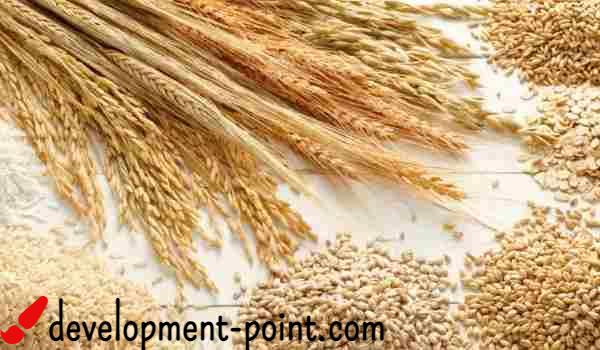Buckwheat: What are its most important benefits and uses?
Buckwheat is a whole grain richer in minerals than other types of grains such as rice, wheat, and corn. It is mainly cultivated in many countries of the northern hemisphere such as Kazakhstan, Russia, China, and Central and Eastern Europe. However, due to its many health benefits, its use has spread around the world.
black wheat
Wheatgrass contains protein, fiber, folic acid, vitamin K, and vitamin B6. Buckwheat is also an ideal choice for those who suffer from digestive disorders or gluten sensitivity. As it is gluten free. In addition, it has many health benefits such as promoting heart health and losing weight.
The nutritional value of buckwheat
One cup of roasted and cooked whole grains (equivalent to 68 grams) contains many nutrients such as:
- Protein: 5.68 grams
- Fat: 1.04 grams
- Carbohydrates: 33.5 grams
- Fiber: 4.5 grams
- Potassium: 148 mg
- Phosphorus: 118 mg
- Magnesium: 86 mg
- Calcium: 12 mg
- Iron: 1.34 mg
Uses for buckwheat
- Wheat flour can be used to make bread, pancakes, and muffins.
- It can be added to salad dishes, after boiling the grains in salty water before adding them to the salad dish.
- It is used in preparing buckwheat tea.
- Buckwheat honey is also known for its high nutritional value and its high antioxidant content (a type of honey made by bees from the nectar of buckwheat flowers).
It is worth noting that it is considered one of the main ingredients of many European and Asian dishes.
The benefits of buckwheat
There are many benefits of buckwheat, the most famous of which are:
1. Promote heart health
Wheatgrass contains nutrients important for heart health, such as rutin, copper, fiber, and niacin. One study has proven a relationship between diets that contain wheat grains and a reduced risk of heart disease. Where rutin works to prevent blood clots, reduce inflammation, and reduce blood flow. Dietary fiber also improves blood sugar levels, thus reducing the chances of heart disease, stroke, diabetes, and obesity.
2. Improve digestion
Where fiber helps in the process of digesting food and helping it move through the digestive system. Vitamin B3 (niacin) also converts carbohydrates, fats, and proteins into energy so that the body’s cells can use them to carry out their tasks efficiently.
3. Maintain a healthy weight
Buckwheat is rich in proteins. This leads to a feeling of fullness with fewer calories than eating other types of food.
4. Maintaining blood sugar levels
One of the laboratory studies, which was conducted on animals. The complex carbohydrates contained in wheatgrass help manage blood sugar levels. This is because the body takes longer to break down complex carbohydrates than simple carbohydrates. This reduces digestion and keeps blood sugar levels stable for a longer period of time. However, more research is needed on humans, to confirm its effectiveness on people with type 2 diabetes.
5. Promote blood circulation
Wheatgrass helps improve blood flow. One preliminary study found that drinking buckwheat tea helps prevent aggravation of leg swelling in those with circulatory problems.
Cautions when using
It is generally considered safe to eat wheatgrass. However, some people may experience an allergic reaction to buckwheat. Which may cause them to have some symptoms, such as swelling of the mouth. Also, there is not enough information about the safety of using buckwheat as a medicine during pregnancy and breast-feeding. Therefore, it is recommended to consult a doctor before using it as a treatment.

